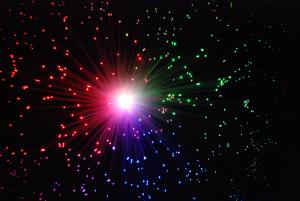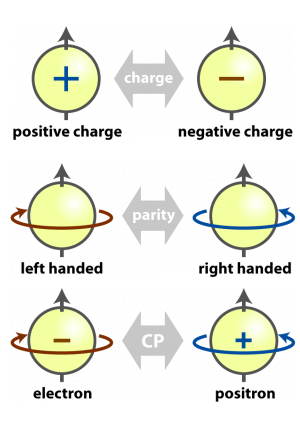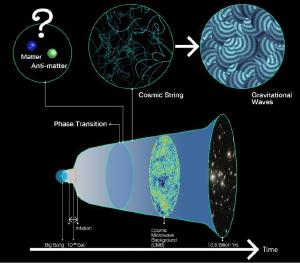Blog
See Saw
Margery Daw
6 February 2020
 Wikipedia user annatsach (CC BY 4.0)
Wikipedia user annatsach (CC BY 4.0)We can create matter from energy in the lab. Particle accelerators do this all the time. When we do, half of what is created is matter and the other half antimatter. There is a symmetry in physics that requires matter and antimatter to appear in equal amounts. But when we look around the universe, what we see is matter. So how did the big bang create all the matter we see without creating an equal amount of antimatter? The answer could be neutrinos.
Matter and antimatter are kind of like cosmic twins. For every type of matter particle, there is a corresponding antimatter particle. The main difference between the two is their electric charge. For example, an electron has a negative charge, while the anti-electron (commonly called the positron) has a positive charge. Protons have a positive charge, while anti-protons have a negative one.
 Flip Tanedo
Flip TanedoOne of the fundamental symmetries in physics is the conservation of charge. The total charge in the universe is zero, and that can’t change. So if you create a charged particle of matter, you must also create a corresponding antimatter particle with the opposite charge. This symmetry is so central to physics that astronomers think the big bang created matter and antimatter in equal amounts. Soon afterward, something must have happened to leave the universe with more matter than antimatter.
That’s where the real mystery lies. What mechanism could let the cosmos break the symmetry between matter and antimatter? One idea focuses on neutrinos.
Neutrinos are elementary particles that don’t have an electric charge. But they do have a property called weak isospin, which is essentially the “charge” of the weak force. This means there are both matter and antimatter neutrinos. But neutrinos have two properties that differentiate them from every other elementary particle. The first is their mass is “fuzzy.” There are three different masses a neutrino can have, and a typical neutrino is in a quantum superposition of all three. This is why neutrinos can osccilate between different flavors. The second has to do with their chirality.
 Wikipedia
WikipediaEvery elementary particle has a rotation-like property known as spin. When a particle is shooting through space, the spin and motion can point along its direction of motion, or opposite to its motion. The former is known as right-handed chirality, while the latter is left-handed. Both matter and antimatter particles can have either chirality, except for the neutrino. Neutrinos are always left-handed, and anti-neutrinos are always right-handed.
We don’t know why this is, but one idea is that chirality affects neutrino mass through a process known as the seesaw mechanism. In this model, right-handed neutrinos and left-handed anti-neutrinos exist, but their masses are so large we don’t see them in typical particle interactions. This seesaw mechanism could solve the mystery of the mostly-matter universe we see today.
 R.Hurt/Caltech-JPL, NASA, and ESA, with modifications by Kavli IPMU
R.Hurt/Caltech-JPL, NASA, and ESA, with modifications by Kavli IPMUThe idea is that very soon after matter and antimatter appeared in the cosmos, the universe underwent a phase change where more antimatter converted into heavy anti-neutrinos than matter converted into heavy matter neutrinos. The total charge of the universe remained zero, and the matter-antimatter balance is preserved, but what remained was mostly regular matter and heavy anti-neutrinos.
It’s a great idea, but meaningless unless you could prove it. Recently a team proposed a way that might be done.1 If such a phase change occurred, the shift in mass would have created gravitational waves throughout the observable universe. In their recent work, they argue that these gravitational waves should be detectable by future gravity telescopes. If they are right, it could finally solve one of the biggest mysteries in cosmology.
Dror, Jeff A., et al. “Testing the Seesaw Mechanism and Leptogenesis with Gravitational Waves.” Physical Review Letters 124.4 (2020): 041804. ↩︎